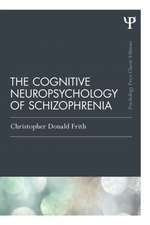Evidence-Based Treatment of Stuttering: Empirical Bases and Clinical Applications
Autor Bothe Rosalee C. Shenker Editat de Anne K. Botheen Limba Engleză Hardback – 31 mar 2004
Preț: 948.98 lei
Preț vechi: 1157.29 lei
-18% Nou
Puncte Express: 1423
Preț estimativ în valută:
181.58€ • 189.61$ • 149.95£
181.58€ • 189.61$ • 149.95£
Carte tipărită la comandă
Livrare economică 15-29 aprilie
Preluare comenzi: 021 569.72.76
Specificații
ISBN-13: 9780805846324
ISBN-10: 0805846328
Pagini: 312
Dimensiuni: 164 x 237 x 22 mm
Greutate: 0.54 kg
Ediția:New.
Editura: Psychology Press
ISBN-10: 0805846328
Pagini: 312
Dimensiuni: 164 x 237 x 22 mm
Greutate: 0.54 kg
Ediția:New.
Editura: Psychology Press
Textul de pe ultima copertă
This book is the result of a "State-of-the-Art-Conference" held at the University of Georgia dedicated to the evidence-based treatment of stuttering. An international group of prominent fluency researchers and clinicians were invited to present and discuss current data and issues related to the treatment of stuttering. The topic was defined to include evidence about stuttering, evidence about stuttering treatment, and discussions of how that evidence should guide the continuing research and practice. The explicit link between empirical evidence and suggestions for clinical practice is the goal of the book.
The book begins by addressing the notion of "evidence-based practice" and considers its implications for stuttering treatment. Part II presents the intersection of the nature of stuttering; the theories of stuttering; and the implications of nature, theory, and other knowledge for stuttering treatment decisions. Part III provides two of the many measurement issues facing stuttering treatment followed by Part IV, which is devoted to the quality of treatment research evidence, for specific treatments and in terms of some more general methodological and professional issues. The final part summarizes the clinical recommendations made throughout the book and discusses evidence-based, outcomes-focused clinical decisions for stuttering.
These chapters are intended to provide "state-of-the-art" information to researchers, clinicians, and students who are interested in developing, identifying, or using the best possible evidence-based treatments for stuttering.
The book begins by addressing the notion of "evidence-based practice" and considers its implications for stuttering treatment. Part II presents the intersection of the nature of stuttering; the theories of stuttering; and the implications of nature, theory, and other knowledge for stuttering treatment decisions. Part III provides two of the many measurement issues facing stuttering treatment followed by Part IV, which is devoted to the quality of treatment research evidence, for specific treatments and in terms of some more general methodological and professional issues. The final part summarizes the clinical recommendations made throughout the book and discusses evidence-based, outcomes-focused clinical decisions for stuttering.
These chapters are intended to provide "state-of-the-art" information to researchers, clinicians, and students who are interested in developing, identifying, or using the best possible evidence-based treatments for stuttering.
Cuprins
Contents: Preface. Part I: Introduction. A. Bothe, Evidence-Based Practice in Stuttering Treatment: An Introduction. Part II: The Nature and Theory of Stuttering: Implications for Evidence-Based Treatment. W.G. Webster, From Hand to Mouth: Contributions of Theory to Evidence-Based Treatment. R.J. Ingham, Emerging Controversies, Findings, and Directions in Neuroimaging and Developmental Stuttering: On Avoiding Petard Hoisting in Athens, Georgia. A. Packman, M. Onslow, J. Attanasio, The Demands and Capacities Model: Implications for Evidence-Based Practice in the Treatment of Early Stuttering. R.C. Shenker, Bilingualism in Early Stuttering: Empirical Issues and Clinical Implications. M. Nippold, The Child Stutters and Has a Phonological Disorder: How Should Treatment Proceed? P. Finn, Self-Change From Stuttering During Adolescence and Adulthood. Part III: Measurement Issues for Evidence-Based Assessment and Treatment of Stuttering. M. Langevin, P. Hagler, Development of a Scale to Measure Peer Attitudes Toward Children Who Stutter. B.T. Crowe, J.H. Davidow, A. Bothe, Quality of Life Measurement: Interdisciplinary Implications for Stuttering Measurement and Treatment. Part IV: Stuttering Treatment Research: Evaluating the Available Evidence. J.H. Davidow, B.T. Crowe, A.K. Bothe, "Gradual Increase in Length and Complexity of Utterance" and "Extended Length of Utterance" Treatment Programs for Stuttering: Assessing the Implications of Strong but Limited Evidence. M. Onslow, S. O'Brian, A. Packman, I. Rousseau, Long-Term Follow up of Speech Outcomes for a Prolonged-Speech Treatment for Stuttering: The Effects of Paradox on Stuttering Treatment Research. A. Packman, M. Onslow, S. O'Brian, A. Huber, Measuring the Outcomes of Behavioral Stuttering Treatments Across Situations: What Are Our Data Telling Us? Part V: Conclusion. A.K. Bothe, Evidence-Based, Outcomes-Focused Decisions About Stuttering Treatment: Clinical Recommendations in Context.
Recenzii
"This book helps to begin the conversation regarding evidence-based practice in the treatment of stuttering, a conversation that continues to this day. It should be in the libraries of universities that have programs in Communication Sciences and Disorders." -Doody's Notes
Descriere
This edited volume collects in-depth chapters about a wide variety of topics important to data-based stuttering treatment and stuttering treatment research, creating the first book to address current knowledge about stuttering in the context of current d












